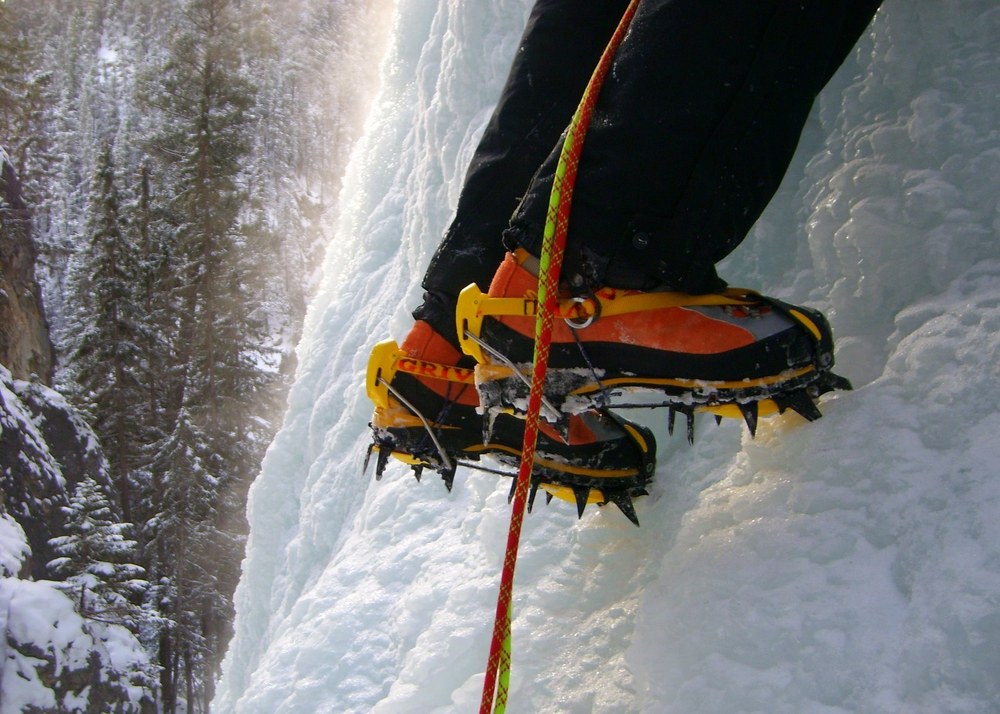
Crampons are an indispensable tool for any alpine mountaineer. But sometimes it's not so "cut-and-dry" as to when you should use them.
A solo climber was on the South Side Route on 11, 250' Mt. Hood in February. He had been climbing without crampons, but stopped at about 9,500' to put them on. He started leveling out a platform so he could make the switch, but suddenly slipped and started sliding down the mountain. As he slid, he lost his ice axe and was unable to arrest the fall. Eventually, he came to rest 500' down the slope.
Another climber, who was both a guide and a mountain rescue leader, witnessed the incident and attended to the fallen climber. His helmet had broken and he sustained a laceration across his forehead. With only the cut and overall soreness, he was very lucky to be otherwise uninjured.
The guide tied into the fallen climber and short-roped him down to a Timberline Resort Snowcat where he was handed off to Ski Patrol.
Lessons Learned
In this incident, it seems obvious the climber waited too long to make his transition. If you find yourself on terrain steep enough and long enough to make a major fall possible, it's generally best to put crampons on sooner rather than later. A good rule of thumb is to "put crampons on before you actually need them."
In many situations, however, this is not overtly obvious. Do you automatically need to put crampons on as soon as you step onto a glacier? What if there area a few feet of fresh snow on that glacier? Or maybe it's hot summer day, you're descending a Cascade volcano, and the snow has turned to mashed potatoes?
In these situations it can be more hazardous to wear your crampons than not. The snow could ball up in your crampons, making you more likely to fall. In these examples, the snow conditions and the terrain dictate the necessity of crampons.
Maybe you have a thin finger of snow to cross before you get back to trail or rock. Are you and your team fast enough to quickly transition into crampons, cross the slope, then take them off again? Or would it be more efficient to chop steps with your ice ax and build more secure footing?
When making these decisions, you need to factor in the entirety of the terrain. Is it a low-angle patch of hard snow, or is it a steep slope with bullet-proof ice and a dangerous run-out? You need to judge what the likelihood of a fall and the consequences of that fall. If you have either a high likelihood or high consequences (or both), you absolutely need to do something to improve the situation and decrease the liklihood of an accident.
There is no perfect rule for when to put on your crampons, but it is always better to have them on before you get into a situation where you really need them. It would be much worse to need them, but not have them. Too many variables need to be taken into account to provide a simple answer, and only you can assess them all when you are out there.
Add a comment
Log in to add comments.Nice to see this, and well said.
I will suggest the same advice for summer snow conditions with dangerous or unknown run-outs as well as for bullet-proof ice. More common and supported by incident reports of slips on snow.
The title and content (which is good) don't match. Better titled something like When to Don Crampons. Such mismatches frustrate those searching titles and undermine credibility of Bog posts.
I've always found that posts in a bog lack credibility
 James Pierson
James Pierson